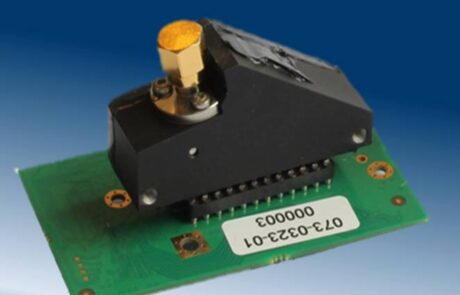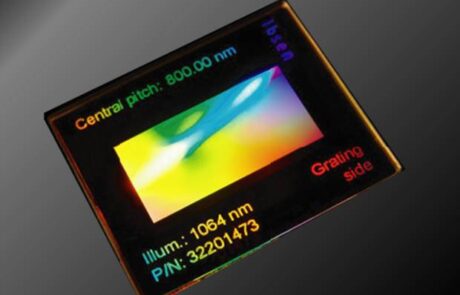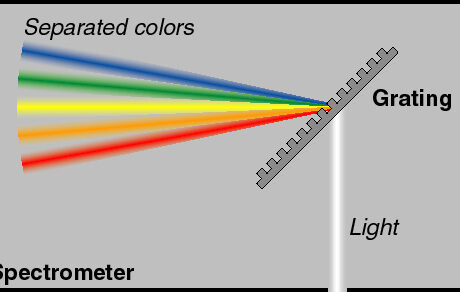Ibsen for dummies
A document explaining in not-too-technical terms what Ibsen does. This document can also be downloaded as a pdf, in an English and a Danish version.
What does Ibsen do?
Ibsen manipulates and measures light. We produce and sell spectrometers, which are optical instruments that measure the color content of light. This is something you want to do if you are a manufacturer of paint, or textiles, or printers, or if you for example are a food producer, and by inspecting the colors of food can deduce its quality.
In order to measure the colors of light, you first need to split it up into its colors – much like a raindrop does when it transforms white light from the sun into a rainbow. A much more convenient method than building raindrops into a box is to use a component called a grating – we also make those.
A grating is an optical component that typically is a piece of glass, onto which is placed a large number of very closely spaced, parallel lines (or grooves). These lines are very narrow – their width is typically on the order of a hundredth of the width of a human hair – we, therefore, produce them with technologies similar to those used to make computer chips.
What makes Ibsen special?
Our gratings are made in fused silica, which basically is very pure glass. This is a good material to make gratings in because it is extremely stable – it can withstand great temperature ranges, humidity, and high power levels, e.g. laser light.
Our gratings are also very efficient, i.e. they direct the light where it is supposed to go and nowhere else.
We also make gratings more precisely than anybody else can – to 1 part in 100,000. If you magnified our gratings to the size of a football (soccer) field (100 m), the precision of our grating lines would correspond to a thin blade of grass (1 mm.)
With our precise gratings, we can make precise spectrometer modules. We can actually measure a color (wavelength) change to one part in a million. We can furthermore do this very quickly, so some of our spectrometers are used to measure vibration, where we basically allow light to “shake” together with the vibrating object and then measure this shaking light very precisely.
Our optical modules are also very compact. This is partly because we are very good at designing optical modules, but also because our gratings split up the colors of the light more than raindrops, and also more than other grating technologies are able to.
Who are Ibsen’s customers?
Our grating customers are companies that make devices in which they need to split up light. Such devices are used for fiber-optic telecom networks, for optical sensing systems, for laser systems, and for spectrometer applications such as Optical Coherence Tomography and Raman Spectroscopy.
Our spectrometer module customers are customers who don’t want to build their own light-measuring instruments. They typically put together larger systems which include our spectrometer modules and many other parts.


